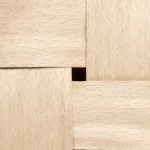How do you clean stained woodwork? Keeping your woodwork clean and polished is essential in maintaining the overall aesthetic and value of your home or office. Over time, woodwork can accumulate various types of stains, such as water stains, oil-based stains, and general build-up of dirt and grime. In this article, we will discuss the importance of regular maintenance and provide a comprehensive guide on how to effectively clean stained woodwork.
It’s crucial to understand the different types of stains that can affect woodwork to effectively address them. Whether it’s water stains from spills or leaks, oil-based stains from cooking or furniture polish, or just a general build-up of dirt and grime, each type requires specific cleaning methods and products for removal. By understanding the type of stain you are dealing with, you can better prepare yourself to tackle the cleaning process.
Before starting the cleaning process, it’s important to gather all the necessary supplies. This includes wood cleaner, microfiber cloths, sandpaper, protective gloves, and any other tools or products that may be needed for a thorough cleaning job.
Additionally, preparing the work area by removing furniture or decorations and protecting surrounding flooring or walls is essential before diving into the cleaning process. By following these steps and using the right techniques for cleaning stained woodwork, you can achieve a clean and polished finish that enhances the overall look and value of your property.
Understanding the Type of Stain
Woodwork in homes or offices is susceptible to different types of stains, which can affect its overall appearance and condition. Water stains, oil-based stains, and general buildup of dirt and grime are common issues that people encounter when trying to keep their woodwork clean and well-maintained. Understanding the type of stain present on the woodwork is crucial in order to determine the appropriate cleaning method and ensure the best possible results.
Water stains, often caused by water rings from glasses or cups, can be one of the most common problems encountered with woodwork. These stains can penetrate the surface of the wood if not addressed promptly, leading to discoloration and potentially permanent damage.
On the other hand, oil-based stains may come from spills or splatters in cooking areas or workshops, leaving unsightly marks on the wood. Finally, general buildup of dirt and grime can accumulate over time, resulting in a dull and unattractive appearance for the woodwork.
To effectively clean stained woodwork, it is essential to first identify what type of stain is present before proceeding with any cleaning method. Different types of stains require different approaches in order to achieve optimal results without causing any further damage to the wood itself.
| Type of Stain | Characteristics |
|---|---|
| Water Stains | Caused by water rings from glasses or cups; can lead to discoloration if not addressed promptly |
| Oil-Based Stains | Come from spills or splatters in cooking areas or workshops; leave unsightly marks on the wood |
| Dirt and Grime Buildup | Accumulates over time; results in a dull and unattractive appearance for the woodwork |
Gathering the Necessary Supplies
When it comes to effectively cleaning stained woodwork, having the right supplies on hand is crucial for achieving the best results. Here is a comprehensive list of tools and cleaning products needed to tackle this task:
Wood Cleaner
One of the most important supplies for cleaning stained woodwork is a high-quality wood cleaner. Look for a formula that is specifically designed for use on wood surfaces and that is safe and effective for removing various types of stains.
Microfiber Cloths
Microfiber cloths are essential for gently wiping down woodwork surfaces without causing any scratches or damage. These soft and absorbent cloths are perfect for applying cleaning products and buffing away dirt and grime.
Sandpaper
In some cases, particularly stubborn stains may require sanding to achieve a thorough clean. Keep a few different grits of sandpaper on hand to address different levels of staining or buildup.
Protective Gloves
When working with cleaning chemicals and potentially harsh substances, it’s important to protect your hands with a pair of sturdy gloves. Opt for durable gloves that provide ample protection without limiting dexterity.
By ensuring that you have these essential tools and cleaning products at your disposal, you can confidently take on the task of cleaning stained woodwork in your home or office space.
Remember that proper preparation and using the right supplies are key factors in achieving successful results when it comes to maintaining the cleanliness and appearance of wood surfaces.
Preparing the Work Area
- Remove any furniture or decorations: Start by clearing the area around the woodwork. Remove any furniture, wall decor, or other items that may obstruct access to the wood surfaces that need cleaning.
- Protect the surrounding flooring or walls: To prevent accidental damage from cleaning solutions or debris, it’s important to protect the surrounding flooring or walls. Place drop cloths or plastic sheeting on the floor and cover nearby walls with painter’s tape if necessary.
- Open windows for ventilation: If you are using strong cleaning agents, ensure proper ventilation by opening windows and doors. This will help in dissipating fumes and odors and creating a more comfortable working environment.
By following these simple steps, you can create a safe and well-prepared work area for cleaning stained woodwork without any unnecessary hassle or mess.
Once you have properly prepared the work area, you can proceed with confidence knowing that you have taken all necessary precautions for an efficient and successful woodwork cleaning process.
Remember that taking time to prepare ahead of time will make the actual cleaning process smoother and more effective overall. By properly preparing your work area, you can achieve cleaner and more polished woodwork without causing any damage to your surroundings in the process.
Techniques for Cleaning Stained Woodwork
When it comes to cleaning stained woodwork, employing the right techniques can make all the difference in achieving a polished and pristine finish. Whether dealing with water stains, oil-based stains, or general dirt buildup, understanding and utilizing the appropriate cleaning methods is essential for restoring the natural beauty of wood surfaces.
Gentle Circular Motions With Wood Cleaner
One effective technique for cleaning stained woodwork involves using a wood cleaner and applying it with gentle circular motions. This method helps to lift dirt and grime from the surface without damaging the wood. It is important to use soft, non-abrasive cloths or sponges to avoid scratching or dulling the finish. After applying the cleaner, be sure to wipe away any excess product and allow the woodwork to dry completely before proceeding with any additional treatments.
Sanding Down Stubborn Stains
For more stubborn stains that resist traditional cleaning methods, sanding down the affected areas can provide a more thorough clean. Using fine-grit sandpaper, lightly sand the stained sections of woodwork in a back-and-forth motion until the stain is lifted.
It’s crucial to exercise caution and avoid excessive pressure during this process to prevent unnecessary damage to the wood surface. Once complete, wipe away any dust or debris before adding a protective sealant or polish to restore shine and luster.
Combining Techniques for Optimal Results
In some cases, using a combination of both gentle circular motions with a wood cleaner and targeted sanding may be necessary to achieve optimal results when cleaning stained woodwork. By first addressing surface-level dirt and grime with a cleaner and then targeting deeper-seated stains with sanding, individuals can effectively restore the natural beauty of their wood surfaces while ensuring lasting cleanliness.
Addressing Stubborn Stains
When it comes to cleaning stained woodwork, addressing stubborn stains can be a challenging task. However, with the right strategies and products, you can effectively tackle even the most deep-seated stains on your wood surfaces. Here are some specific techniques and remedies to help you restore the beauty of your woodwork:
1. Vinegar and Baking Soda: One of the most effective natural remedies for removing stubborn stains from woodwork is a mixture of vinegar and baking soda. Create a paste by mixing these two ingredients together and apply it onto the stained area.
Let it sit for a few minutes before gently scrubbing the stain with a soft cloth or sponge. The natural acidic properties of vinegar combined with the mild abrasive nature of baking soda can work wonders in lifting tough stains from wood surfaces.
2. Professional-Grade Wood Restoration Products: For particularly stubborn or old stains that seem impossible to remove with household remedies, consider using professional-grade wood restoration products. These specially formulated cleaners are designed to penetrate deeper into the wood, effectively breaking down and lifting stubborn stains without causing damage to the surface. Be sure to follow the instructions provided by the manufacturer for best results.
3. Sanding: In some cases, sanding down the stained area may be necessary to achieve a thorough clean. Using fine-grit sandpaper, gently sand away at the stain until it is no longer visible. This method should be used as a last resort, as it can potentially damage the finish of your woodwork if not done carefully.
Remember that prevention is always better than cure when it comes to maintaining clean woodwork – regular dusting and maintenance can help prevent stubborn stains from forming in the first place.
Post-Cleaning Maintenance
After successfully cleaning stained woodwork, it is essential to implement post-cleaning maintenance practices to ensure that the woodwork remains clean and well-maintained. One effective way to maintain the cleanliness and appearance of newly cleaned woodwork is by using protective sealants. Applying a protective sealant such as polyurethane or varnish can help prevent future stains and damage, while also providing a glossy finish to the woodwork.
In addition to using protective sealants, regular dusting and polishing routines are crucial for preserving the cleanliness and overall appearance of the woodwork. Dusting the woodwork with a soft, dry microfiber cloth on a weekly basis can help remove any surface dust and dirt, preventing it from accumulating and causing stains over time. Furthermore, using a quality wood polish specifically designed for the type of wood used in the woodwork can help restore its natural luster and shine.
It is important to note that when applying protective sealants or using wood polish, it is imperative to follow the manufacturer’s instructions carefully to achieve optimal results. Additionally, conducting regular inspections of the woodwork for any signs of new stains or damage is recommended so that they can be addressed promptly before they become more challenging to clean. By implementing these post-cleaning maintenance tips, individuals can enjoy beautifully clean and polished woodwork for years to come.
| Post-Cleaning Maintenance Tips | Description |
|---|---|
| Use Protective Sealants | Applying polyurethane or varnish can prevent future stains and damage. |
| Regular Dusting | Dusting with a soft microfiber cloth on a weekly basis helps remove surface dust and dirt. |
| Wood Polish | Using quality wood polish restores natural luster and shine. |
Conclusion
In conclusion, maintaining clean and polished woodwork is essential for the overall aesthetic and value of a property. Understanding the type of stain affecting the woodwork is crucial in determining the appropriate cleaning method. Whether it’s water stains, oil-based stains, or general dirt and grime buildup, knowing the type of stain will help in effectively cleaning stained woodwork.
After gathering the necessary supplies and preparing the work area, there are various techniques for cleaning stained woodwork, such as using gentle circular motions with a wood cleaner or sanding down stubborn stains for a more thorough clean. It is also important to address stubborn stains with specific strategies, including natural remedies like vinegar and baking soda or professional-grade wood restoration products.
Once the cleaning process is complete, post-cleaning maintenance is vital for keeping the woodwork looking clean and inviting. This may involve using protective sealants or establishing regular dusting and polishing routines. By following these tips and staying proactive in maintaining woodwork, one can ensure a beautiful and welcoming living or working environment. So next time you ask yourself “how do you clean stained woodwork?” be sure to refer back to these key points for a successful outcome.
Frequently Asked Questions
What Is the Best Thing to Clean Stained Wood With?
The best thing to clean stained wood with is a mild solution of water and dish soap. This can help remove surface dirt and grime without harming the wood finish. It’s important to avoid harsh chemicals or abrasive cleaners that can damage the wood.
How Do You Clean Stained Wood Trim?
To clean stained wood trim, it’s best to start by dusting the trim with a microfiber cloth or soft brush to remove any loose dirt or debris. Then, use a mild solution of water and dish soap to gently clean the trim, followed by drying it with a clean cloth.
What Is the Best Thing to Clean Woodwork?
The best thing to clean woodwork with is a mixture of water and vinegar. This natural solution can effectively remove dirt and grime from woodwork without causing any damage to the surface. It’s important to always test a small, inconspicuous area first before cleaning the entire surface.

Hi everyone! I’m a woodworker and blogger, and this is my woodworking blog. In my blog, I share tips and tricks for woodworkers of all skill levels, as well as project ideas that you can try yourself.





